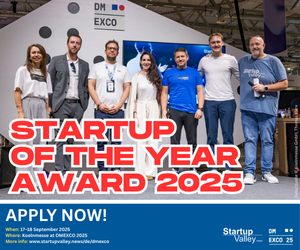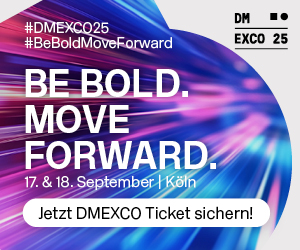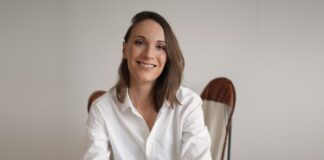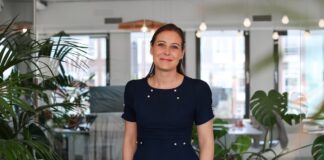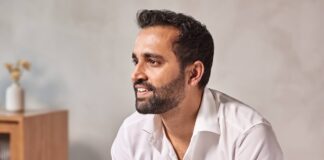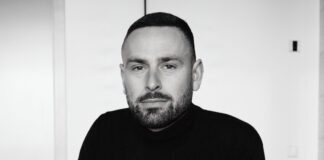Zoog adapts children’s books to the medium of creative video communication, enabling family members to communicate with the children in their lives across the technological gap in an entertaining way
Please introduce yourself and your startup Zoog to our readers!
My name is Yoav Oren and I am the Co-Founder and CEO of Zoog. Prior to building Zoog, I held several leadership positions at SimilarWeb, including serving as the company’s Chief of Staff and General Manager of Greater China.
Zoog adapts children’s books to the medium of creative video communication, enabling grandparents, parents, other remote family members or educators to communicate with the children in their lives across the technological gap in an entertaining way. Through Zoog’s mobile app, anyone can bring a book to life and literally become “part of the story” utilizing AR masks, filters, and other visual overlays.
Kids are engaged and excited when they see their loved ones “in” the stories they love. Zoog was created so that even oceans and generations apart, your family can enjoy memorable moments through creative interactions.
How did you get the idea of Zoog? Why did you decide to start with Zoog?
When the pandemic hit us all, the world as we knew it changed overnight. Everyone was affected by the changes that COVID brought, especially feeling the uncertainties of how the world will change and when we will go back to normal. However, the most immediate effect I personally felt was not necessarily in the line of my work, but rather how my children were directly impacted by the boundaries and hurdles that the pandemic brought with it.
Communication took the first impact. Suddenly, we were isolated from the world and all communication turned to video – with Zoom and FaceTime leading the way in our families. My kids couldn’t stand this. In fact, they couldn’t do it at all and did anything to avoid these calls with their distant relatives.
Despite my wife and I nudging them to spend a few minutes on the phone with their grandparents, they couldn’t do it. I learned that they experienced these calls as boring and repetitive, and they simply weren’t interested in small talk.
I looked for alternatives and tried several options -products that claimed to solve the problem – but nothing worked, my kids stood their ground.
This created a frustrating situation for all parties involved in the call-for my kids who simply wanted me to leave them be, for my parents who were used to communicating or seeing their grandchildren and suddenly were not able to, and for us as parents, feeling like we needed to bribe our kids every time we wanted them to spend some time with their grandparents, or other distant family members on a call.
Although the pandemic amplified the cross-generational video communication problem, it also presented a unique opportunity. Video communication, for the first time, became the overarching norm in the world and affected us in the business world, the education world, and even in our own homes – everyone got used to the fact that this is the new way to communicate and felt the need to evolve and adapt. This opened a special window of opportunity for us to solve a growing problem that would only become more severe, while also giving us the opportunity to work on something that we were affected by in our own homes. In addition, we felt that our initial target audience, young grandparents, were ready and receptive to video products more than ever before.
We found a problem that directly affected not only us, but the people who we cared about the most; we found purpose and right then decided to quit our respective jobs, take the leap of faith, and build Zoog.
What is the vision behind Zoog?
Our vision is to become the world’s leading content-driven family communication platform. As we continue developing our product, we will offer a richer variety of content, different ways to interact, and experiences to be shared together both live and asynchronously. We see that communication, especially with children, will be intertwined with content, and Zoog sits at the epicenter of this crossroad. In order to carry out this vision, we are currently building tools that could be used by any content creator. Soon, any author, illustrator, or publisher will be able to create fun, engaging, and educational content directly on Zoog, using our built in templates or by connecting with an AR designer on our platform.
How difficult was the start and which challenges you had to overcome?
Matan, my co-founder, and I met in January of 2020. I decided to quit my job a few months prior to that and pursue an entrepreneurial dream. And I had an idea that I was passionate about and was searching for quite some time for the right co-founder.
I spent different periods with different potential co-founders, some very talented and great people, but there are so many variables that go into finding the right co-founder. First, there needs to be a complimentary skill set – each person needs to bring to the table something that the other does not have. Second, the person needs to have the right professional experience. Third, the timing needs to be right as starting a startup is probably one of the most difficult decisions anyone can make. And to top all this – and probably the most important thing – there simply needs to be a click – you need to like the person you will be spending most of your time with.
What’s interesting is that the person who introduced Matan and me is actually one of the potential co-founders I was considering. He ticked most boxes, but in the end it came down to boldness and his ability to take that leap of faith to leave his job and just go for it.
Matan and I immediately clicked. We simply enjoyed being together and really felt that at our core we shared the same values as well as a complimentary skillset. More importantly, we trusted each other. After our second meeting, Matan said, “let’s do this.” He quit his job and we started the following day.
During our first week working together, we sat down and had a two day intensive session answering 50 questions for founders – tough and revealing questions. It was like going through basic training, even though neither one of us could predict that this was the easy part of the beginning of our journey.
A month after we started working together, my wife gave birth to our third child. Two weeks after that, my wife was rushed back to the hospital with a severe kidney infection. I stayed home with three kids (including a newborn) while she was hospitalized for two weeks. The day she returned home was the day that the Prime Minister announced a nationwide quarantine due to COVID-19. All this, while we were trying to build a startup.
Matan stuck by me the entire time, working around the clock and according to my schedule. I remember telling him: “This is our beginning and I know it is rough, but if we get past this, we can get past anything.”
My kids ended up spending 56 days at home throughout the first year of our startup – not an easy task to juggle at all. Nevertheless, we were able to find the right balance, to develop our product while balancing a delicate family situation and prevail.
Who is your target audience?
Zoog’s target audiences: 1. Children between the ages 1-10; 2. Young grandparents/baby boomers; 3. Parents.
Digital engagement among the baby boomer generation has grown dramatically. From mobile to social, gaming to streaming, we’ve seen boomer numbers go way up during the pandemic on all digital fronts.
What is the USP of your startup?
Our solution offers several key factors that differentiate us from our competition:
1. Hands-on research:
We’ve designed and adjusted our product roadmap together with a unique group of people from our target audience– a group of 50 young grandparents who’ve been part of our beta since day one. This has allowed us to learn how our users see our product, how they use it, and what is essential for them in our solution.
2. Tapping into the creator economy and democratizing it:
We’ve made it easy and intuitive for anyone to become an AR content creator! While typically this is reserved for younger audiences (generations Z, Y, etc.), using Zoog, anyone (literally) can create AR content that is engaging, fun, and at the same time educational, which they can share with their loved ones and with the world. People like to be creative and we’ve developed a tool that allows anyone to do so.
3. Experiences don’t have to be live:
Creating bonds, if it is between grandparents and their grandchildren, between traveling parents, teachers, servicewomen and men, and the children in their lives works perfectly well when we do not need to rely on synchronization and sufficient bandwidth. Zoog allows AR creations to be recorded, stored, and shared, so we can create everlasting memories and experiences that are meaningful and enjoyable for everyone. Amongst our competitors, we are the only company that offers asynchronous experiences that are enjoyable both for the creator as well as the receiver; experiences that are saved, forever.
4. Easy feedback loop:
Zoog offers a super easy solution for reciprocating comments – from emojis to text, and even video responses – the kids (or any family member) can share their responses with the video creator in an easy way, and just like the videos, the responses are saved and can be viewed, always.
Can you describe your typical workday ?
As a startup, there isn’t really a “typical day” as each day presents its own unique challenges. However, we are creators at heart and have a typical creative process which includes either working with an existing book/published text or actually writing a story from scratch with one of our in-house authors. After our author completes the text according to our format, our storyboard artist puts together a first storyboard draft, which is the script defining what will happen artistically in each “scene” and page of the story.
In the storyboard we define which elements will be in 2D, 3D, what kind of backgrounds we want, where the storyteller is going to be placed and what AR masks we want to add to make them part of the story. We also define the sequence of events and the soundtrack we want to add, as well as how we want the text to appear in the story. After this part is done, our creative director assigns tasks to our 2D animator and our 3D artist and then they prepare all assets needed for the story. We then create the scenes inside Camera Kit (powered by Snap) and then our engineering team adds the new story to our app. We then have multiple QA reviews before we release the content onto our app and to our audience.
While this is happening, our marketing team creates campaigns around our content and promotes them on our social media channels. Simultaneously, our product and engineering teams continue to develop new features and improve our product flow within our app as well as our frontend site. All this while our CEO speaks with investors, brands, and major studios and publishers to create more content partnerships for Zoog.
Where do you see yourself and your startup Zoog in five years?
In five years, Zoog will offer a platform for any content creators to be able to produce AR content meant for children, directly on Zoog. In addition to opening up Zoog to external developers and creators, we will expand our offering into additional verticals, the first of which will be education – offering Zoog as an educational product both for teachers to create engaging content for their students, and for children in order to encourage them to read on Zoog. And in addition, we will be able to offer deeper insights to our audiences about the usage of their content: For the publishers and authors—engagement metrics about the usage of their content, for the parents and teachers—reading progress of the children.
Last, as we develop more content and grow our audience, we will be able to add a layer of AI–a recommendation engine that will offer more specific content per individual user across many categories and interests.
What 3 tips would you give to founders?
Focus:
There is a lot of noise when building a startup and a lot of potential distractions. Try your best to focus on the single KPI that will move your business forward at each stage and time, and make sure this KPI is aligned with the entire team’s work.
Partner:
The entrepreneurial journey is a lonely one. Find a partner that you trust, enjoy being with, and that compliments you professionally. The same goes for hiring the right people, especially at the beginning, as you are building the company’s culture. Can’t emphasize the importance of people and finding the right people you trust and believe in your vision enough.
Support:
Make sure that you have the right support system at home. It is a crazy ride and you want to make sure that your significant other, your family, children (if you have them) understand what you are going through and are supportive. Very hard to succeed without this.
Communicate:
Both with your family, but also internally with your team – be honest, open, and share your struggles. I find that the more I am open with my team, the more helpful they are, and the more committed they are to help make our collective dream a reality.
Conviction:
You will meet significantly more doubters than believers. Smart people who will tell you that they do not believe in what you are doing. Remember your own “why” and reiterate (outload to the world and to yourself) your own conviction.
Marathon:
It can be frustrating that while you are trying to run a sprint, the rest of the world isn’t moving at your pace. Remember that, and remember that the entrepreneurial journey is a marathon, not a sprint.
Last, take whatever I just said (and any other advice you get) with a grain of salt–trust your own instincts and go for it! It is a ride of a lifetime!
More information you will find here
Thank you Yoav Oren for the Interview
Statements of the author and the interviewee do not necessarily represent the editors and the publisher opinion again.
